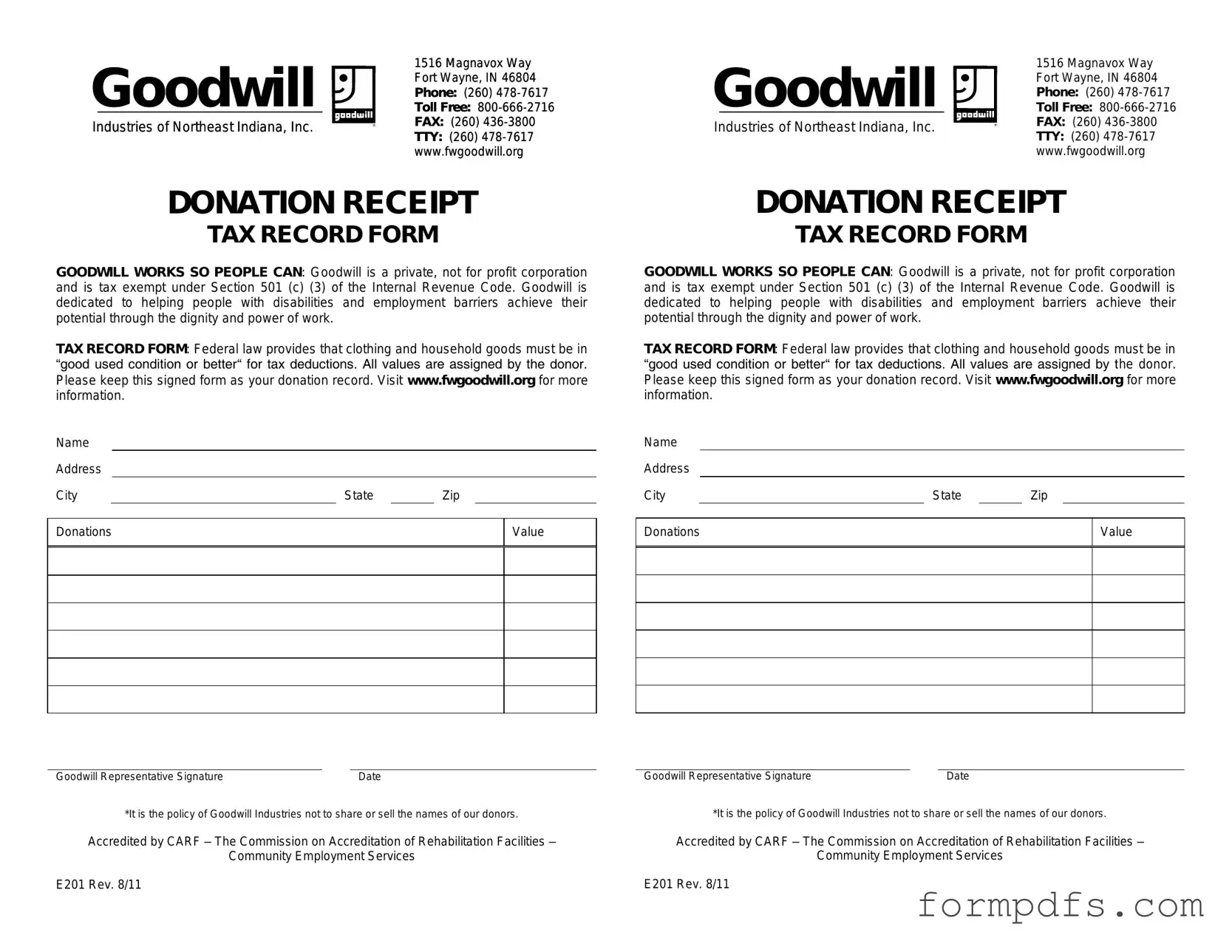What is a Goodwill donation receipt form?
A Goodwill donation receipt form is a document provided by Goodwill Industries to individuals who donate items. This form serves as a record of the donation and can be used for tax purposes. It typically includes details such as the date of the donation, a description of the items donated, and the donor’s information.
Why do I need a donation receipt?
A donation receipt is essential for tax purposes. When you donate to a qualified charitable organization like Goodwill, you may be eligible for a tax deduction. The receipt acts as proof of your contribution, which the IRS requires if you plan to claim a deduction on your tax return.
How do I obtain a Goodwill donation receipt?
When you make a donation at a Goodwill location, you will typically receive a donation receipt on-site. If you forget to ask for one, you can request it from a staff member. For larger donations or if you are donating items through a pickup service, you can also request a receipt during the scheduling process.
What information is included on the receipt?
The receipt usually includes the donor’s name, address, the date of the donation, a list of the donated items, and a statement indicating that no goods or services were provided in exchange for the donation. This information is vital for accurately reporting your donation to the IRS.
Can I estimate the value of my donated items?
Yes, donors are allowed to estimate the fair market value of their donated items. Goodwill provides guidelines and resources to help you determine the value. However, it’s important to remember that the IRS requires you to be reasonable in your valuation. For high-value items, consider obtaining a professional appraisal.
What if I lose my donation receipt?
If you lose your donation receipt, you can contact the Goodwill location where you made your donation. While they may not be able to provide a duplicate receipt, they can often help you verify your donation through their records. It’s a good practice to keep a copy of your receipt in a safe place for future reference.
Are there any limits on the amount I can deduct for my donations?
There are limits on the amount you can deduct, which depend on your adjusted gross income (AGI) and the type of property donated. Generally, you can deduct up to 50% of your AGI for cash donations and 30% for donations of appreciated property. For specific guidance, consult a tax professional or refer to IRS guidelines.
